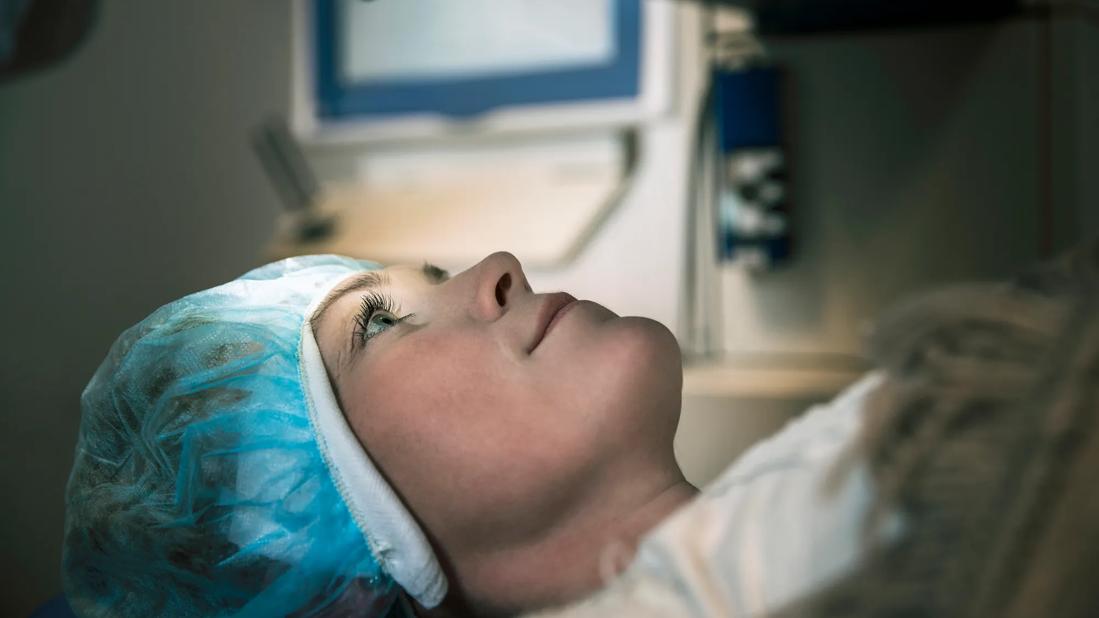PRK and LASIK are both laser eye surgeries that can help you see better, but they’re different in technique, recovery time and who can benefit

Looking forward to ditching the contacts? Not relying on your glasses so much?
Advertisement
Cleveland Clinic is a non-profit academic medical center. Advertising on our site helps support our mission. We do not endorse non-Cleveland Clinic products or services. Policy
Laser eye surgery (aka refractive surgery or vision correction surgery) helps hundreds of thousands of people each year improve their eyesight.
And while LASIK may be the most recognizable name in refractive surgery, it’s not the only game in town. PRK may be an option, too. And for some people, it may be a better option than LASIK.
“Neither PRK nor LASIK is inherently better. It’s about matching the right surgery to the right person,” says optometrist Jason Marcellus, OD.
What’s the difference? And which is better for you? Dr. Marcellus weighs in on the PRK vs. LASIK debate.
PRK and LASIK are two kinds of refractive eye surgery.
LASIK is more popular, accounting for about 70% of refractive surgeries each year.
Both PRK and LASIK are procedures that use a laser to change the shape of your cornea (the outmost layer of your eyeball) to fix fuzzy vision. That’s because if your cornea is misshapen, it can’t bring light to your eye properly.
Before either procedure, a healthcare provider numbs your eye with drops. That means you won’t feel any pain during your surgery.
During LASIK surgery, a surgeon flips open a small layer of your cornea. They then use a laser to resculpt specific areas inside your cornea, fixing the spots that cause your vision troubles. Then, they put the flap back on top to cover the treated area.
Advertisement
In PRK surgery, your surgeon doesn’t create a flap. Instead, the laser gets to work directly on the surface of your cornea and reshapes the specified areas. The surgeon then places a bandage contact on your eye. That will stay in place for about a week to protect the surface of your cornea as it heals.
PRK and LASIK surgeries are both outpatient procedures and typically take just 10 to 15 minutes. And they’re known to be some of the safest and most effective surgical procedures around.
The American Association of Ophthalmology says that 9 out of 10 people who have LASIK achieve at least 20/40 or better vision without glasses or contacts. The success rate is the same with PRK.
Perhaps the biggest advantage of LASIK over PRK is the quick recovery time.
It’s common for people who have LASIK to see well the day after surgery. They typically can go to work, drive and go about their day without missing a beat.
“With LASIK, all that needs to heal is the edge around the flap,” Dr. Marcellus notes. “So, it doesn’t take long at all for any discomfort to fade and your vision to be clear.”
Not everyone who’s interested in laser eye surgery is a good candidate for LASIK.
For starters, your cornea needs to be thick enough to make the flap and correct your vision prescription. A high prescription and thin cornea is a recipe for not being a strong candidate for LASIK.
Your eye care team will do tests before surgery to map your corneas and determine if they’re thick enough for LASIK.
One of the most common complaints with LASIK is that people may experience dry eyes following the procedure. If you already experience dry eyes before surgery, it may not be right for you.
And for highly active people, such as those who participate in contact sports, LASIK may not be the right choice.
As Dr. Marcellus puts it, “Anyone who has a high chance of being hit in the face may not be a good candidate for LASIK.”
Remember that flap? It can (rarely) become dislodged. And that risk is increased for people who take part in contact sports. Like football, martial arts, wrestling and more.
PRK is an option for people who aren’t good candidates for LASIK.
Because there’s no flap to worry about, it’s a safe choice for athletes in contact sports. No flap also means it can be an option for people whose corneas are on the thin side.
It also can be a better option if you experience dry eyes. After the initial healing period, people who have PRK are less likely to rely on artificial tears to keep their eyes moistened than are people who have LASIK.
The main drawback of PRK is that you don’t get that immediate gratification of improved vision. It’s more of a slow buildup to improved eyesight.
Advertisement
Why?
“In the first few days after PRK, you may have a lot of irritation because you have an open wound, so to speak, on your cornea,” Dr. Marcellus explains. “And after that initial healing process, it can still be a few weeks for some people before their vision clears up fully.”
That can be a letdown for people who are looking for that “Aha!” moment that so many rave about after having LASIK.
But remember, your chances of 20/20 vision are still the same. It just takes a longer road to get there.
PRK and LASIK are quick and equally effective ways to improve your eyesight. But which is better depends on your needs.
“When we advise people on their refractive surgery options, we’re looking at the long-term effects,” Dr. Marcellus clarifies. “Some people may think they want LASIK because of the immediate results. But if it’s not the right surgery for your eyes’ needs, the results aren’t going to be what you’re hoping for.”
He warns that some less reputable vision correction centers may have lower standards for selecting LASIK candidates. Seek out an evidence-based practice. And ask your provider about their long-term outcomes.
“We see people who come in after having had LASIK at these places saying their vision is deteriorating,” Dr. Marcellus shares. “And when we screen them, it turns out they were better candidates for PRK and shouldn’t have had LASIK in the first place.”
Advertisement
Bottom line? PRK and LASIK can help improve vision. Even to the point that you’ll no longer need glasses or contacts. An eye health specialist can help you to understand which is the better option for you.
Advertisement
Learn more about our editorial process.
Advertisement

Expect to be seeing clearly just 24 hours after LASIK surgery

Your eyes may sting or burn for a few hours after surgery — that’s why your surgeon will recommend a nap

The first three days can be tough — but easier days are ahead

The plain answer is ‘no’ — ingredients meant to clean and disinfect your contact lenses can cause irritation, redness or dryness to your eyes

Both procedures are about equally effective, but which is better depends on your vision needs and current conditions

Too much blue light, especially from digital sources, may lead to eye strain and computer vision syndrome

Having a first-degree biological relative with this eye condition raises your risk, but other factors are at play, too

When worn incorrectly, contacts can cause or worsen dry eye symptoms

Babies can get congested easily, but you can calm their cough by keeping them hydrated, using nasal drops and running a humidifier

Weight loss may cause loose, sagging skin and muscle loss to your rear

Several conditions, like vitiligo and fungal infection, can cause a loss of pigmentation, leading to white spots or patches on your skin